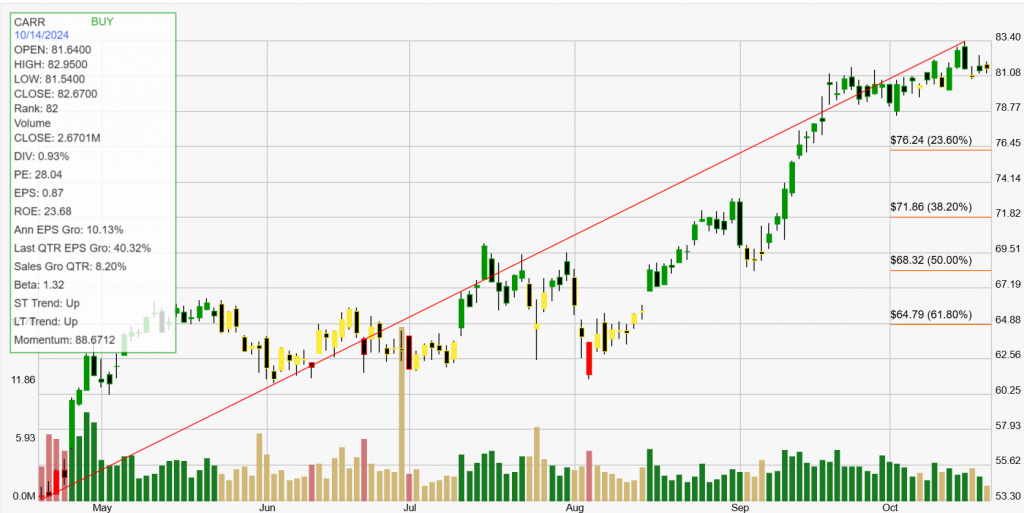Carrier Global Corporation (CARR) is a prominent provider of innovative heating, ventilation, and air conditioning (HVAC) solutions, refrigeration systems, and fire and security products. Originally a division of United Technologies Corporation, Carrier became an independent entity in 2020 and has since established itself as a leader in the global HVAC market. The company is dedicated to enhancing the comfort and efficiency of buildings and homes, offering a wide range of products, including air conditioners, heat pumps, and smart building technology. Carrier’s commitment to sustainability is evident in its efforts to develop energy-efficient solutions that reduce greenhouse gas emissions and lower energy consumption.
The growth of Carrier Global is driven by several key factors. First, the increasing demand for energy-efficient HVAC systems is fueled by rising awareness of climate change and the need for sustainable solutions. As regulations around energy efficiency become stricter, Carrier is well-positioned to provide products that meet these new standards, helping customers lower their energy bills while minimizing their environmental impact. Additionally, the ongoing recovery in the construction industry and rising residential and commercial building activity contribute to a growing market for Carrier’s products and services.
Carrier is also focused on leveraging advanced technology to enhance its offerings. The integration of smart technology into HVAC systems allows for improved monitoring, control, and energy management, appealing to tech-savvy consumers and businesses alike. Moreover, Carrier’s emphasis on research and development ensures that it remains at the forefront of innovation in the HVAC and building solutions industry. With its strong commitment to sustainability, cutting-edge technology, and customer-centric approach, Carrier Global Corporation is well-positioned for continued success in a competitive marketplace.
Click The Image For Current Live ChartBacktesting a stock can provide investors with critical statistical data. These results give you an informed perspective on how a stock trades within your chosen buying and selling method of analysis. The definition of trade expectancy is defined as: trade expectancy = (probability of win * average win) – (probability of loss * average loss). If the calculation returns a positive number, a trader should make money over time.
The average percentage gained on positive, money making trades was 9.87%. While the average percent loss on money losing trades was 3.21%.
Trade expectancy includes both winners and losers. Trade expectancy is displayed as a percentage. This backtest displays the dollar value, percentage, annual trade expectancy, and annual percent. Annual expectancy is the trade expectancy percentage multiplied by the number of trades per year.
The Trade expectancy % for CARR over the past year is 4.64%. The number of trades generated per year was 4 giving an Annual Trade Expectancy of 18.55%
The average days in a trade is 44 and the average days between trades is 28.
With any method of analysis that uses past performance, it can be said that past performance is not indication of future performance. What is does provide is a probabilistic look at a stock’s price activity characteristics over time.

